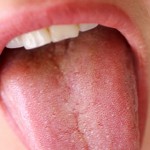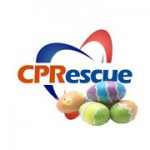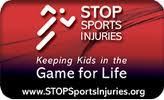Archive for Uncategorized
Stroke in Infants and Children
Posted by: | CommentsStrokes in children is not as rare as we once thought. As medical science advances, previously undiagnosed strokes suffered by children are now being identified and protocol’s are being developed to treat this condition. The usual treatment for adults experiencing a stroke is the administrations of a drug called, tissue plasminogen activator (TPA). Unfortunately this drug, in most cases, can be to strong for infants and children.
In newborns the first symptoms, are often seizures that involve the chaotic spasms of one arm or one leg. For children, migraines, head trauma, dehydration and sickle cell are the common symptoms and risk factors. The risk of stroke in children is greatest in the first year of life, particularly in the first two months.
Prevention in adults is in modifying behaviors and taking medication to prevent the first stroke. For children, since it is more difficult to identify and prevent the first stroke, the primary prevention techniques are to prevent second or additional strokes.
Poisonous Plants
Posted by: | Comments It is time for spring plantings. Did you know that many of the plants in your yard may be poisonous? As you begin to select varieties of flowers and plants for your landscape, you may want to consider if the plant or flower you selected is toxic. Tiger lilies are among the worst poisonous plants for cats and jasmine for dogs, while castor bean is the source for the deadly toxin ricin and a poor choice to grow especially if you have children.
It is time for spring plantings. Did you know that many of the plants in your yard may be poisonous? As you begin to select varieties of flowers and plants for your landscape, you may want to consider if the plant or flower you selected is toxic. Tiger lilies are among the worst poisonous plants for cats and jasmine for dogs, while castor bean is the source for the deadly toxin ricin and a poor choice to grow especially if you have children.
Always check with your local nursery before purchasing any type of plant or flower. Here is a list of just a few common plants:
* Wisteria Vines – Not to be confused with the Desperate Housewives that live on Wisteria Lane. If ingested in sufficient quantities (which, for a young child, would be a relatively small amount), the seeds and pods of wisterias can cause nausea, vomiting, stomach pain and diarrhea.
* Winter-berry Shrubs – Ingesting the bright red berries can cause vomiting, stomach pain and diarrhea.
* Azaleas and Rhododendron Bushes – These are the most popular landscape plants, but ingesting their leaves or flowers can cause vomiting, stomach pain, diarrhea — or worse.
* Juniper Shrubs – Using this ground cover helps control erosion and weeds, but ingesting too many of the berry like cones can lead to kidney damage.
* Bulb Plants – Hyacinths and daffodils bring much delight in spring with their blooms, but these poisonous plants bring nausea, vomiting, and in some cases, even death.
* Winter Jasmine Vines – These vines are poisonous to humans and dogs alike.
So this spring, as you decide the colors of your garden and landscapes, you may want to consider the potential consequences, especially if you have animals and young children.
Want To Lose Weight? Eat More Chocolate.
Posted by: | CommentsA new government study shows that people who frequently consumed chocolate weighed less than those who indulged less often. Some researchers are theorizing that the calories in chocolate are being offset by other ingredients that help boost metabolism, such as caffeine. Chocolate contains a small amount of caffeine which can rev a person’s metabolism and increase the number of calories they burn even while at rest.
Nutritionists not involved in the study say they are not convinced that chocolate can help in the process of losing weight. Some suggest that other factors must be playing a part, though in the study the researchers state that the chocolate eaters did not exercise more or engage in any other activities or behaviors compared to the non or less frequent chocolate eaters.
Dr. Katz, MD, MPH, director at the Yale Prevention Research Center, says that dark chocolate or a chocolate that contains at least 60% cocoa, is the best choice for the dieter. Dark chocolate is bittersweet and the bitterness can help suppress a person’s appetite. Also chocolate is high in fat which slows the digestion process and can make you feel less hungry.
Both the researchers and nutritionist agree that this is not an endorsement to go ahead and fully engage in consuming large amounts of chocolate. Chocolate is full of fat and sugar and has a high calorie count, but a chocolate regiment of around 5 grams or the size of a Hershey’s Kiss, a day should be acceptable and help increase the rate of your metabolism.
So when the chocolate pangs occur during the day, you can now enjoy a small piece of chocolate without the guilty feelings, because in fact it may be helping you lose weight.
Fragrances That Kill
Posted by: | CommentsCan the fragrances in laundry products or air fresheners hurt you? A new study states many of these products contain or emit different chemicals, some of which are regulated as toxic or
hazardous under federal law. Though none of these chemicals are listed on the labels. Chemicals that produce a fragrance are not required by the FDA to be listed on the outside label. “I didn’t find a brand that didn’t emit at least one toxic chemical, ” said Anne C. Steinemann, PhD. the professor at the University of Washington, Seattle who conducted the study.
Many representatives in the industry protested the study stating their products were safe. They state that the amount of the toxic chemicals used, were at levels below that which would cause a problem. And the segment of the population that is sensitive to their products should just avoid them.
Steinemann decided to do the study after, “I actually witnessed someone having a seizure when exposed to an air freshener.” In her laboratory she put products in an isolated space at room temperature and then measured the surrounding air for volatile organic compounds (VOCs). She detected up to 100 different VOCs at levels above 300 micrograms. Many consider this a level to pose potential concern.
Other than the problem of toxins in our products, is that, there are no laws requiring these substances be identified on the outside label. As stated earlier the FDA does not require companies to list the chemicals used in the development of a products fragrance. Consumers are not aware or able to avoid products that they have a sensitivity to these compounds.
To be safe, pick laundry products that do not have a fragrance. Use natural alternatives for air fresheners, such as baking soda, open a window, cut open an orange or use spearmint leaves. If you have other suggestions for air fresheners, please send them to me and I will include them in the Octobers Newsletter.
Do We Learn While We Sleep?
Posted by: | CommentsAn article out of the Harvard Gazette suggests we do. Experiments have associated intense periods of daytime learning with longer periods of sleep. In a sleep study, people were awaken repeatedly during their dream cycles. What researchers found was that these people had a hard time retaining what they had learned the previous day. Whereas, those who had un-interrupted sleep, produced significant differences in remembering the previous day’s activities and information. Dreams are a way for the brain to categorize thoughts, activities and acquired knowledge from the previous day. That sleeping and the process of dreaming are what helps us learn and retain knowledge.
Dreams are the brains way of synchronizing thoughts, repeating the process over and over to help build and strengthen neural pathways. In essence the more we dream the better we are able to retain information that we learn. For athletes, the suggestion from their coaches of getting a good night’s rest maybe be more important than previously thought. Our dreams of running, throwing and catching are another way of practicing. Just like when practicing physically, dreams help us improve and strengthen the new connections we create in our brains when we learn new information.
Nightmares may even help you learn. It has been theorized that some nightmares maybe Mother Nature’s way of practicing for dangerous events. Back in our history, cavemen where constantly aware of possible dangers and many times had to react to dangerous situations. Our life styles now do not present the same dangers, our brains thinks differently in the subconscious. It must be prepared and remain ready. In an attempt to preserve itself, the brain runs scenarios of dangerous situations teaching us to either run or fight, the fight or flight
response. How we behave in our dreams is how we most likely will behave in an extreme situation. Our brain runs these games to re-enforce our neural pathways to danger in an effort to protect itself or us.
Not all dreams and nightmares may not fall within these categorizations, but many scientist believe good sleep with dreams help the body to stay in good physical and mental health.
Bad Breath or Possible Disease
Posted by: | Comments Can your breath detect breast cancer and other diseases? Someday in the near future it just might. Currently doctors use several breath odors in diagnosing certain diseases. A strong fruity odor from your breath may indicate untreated diabetes or other irregular odors can signify either liver or lung disease.
Can your breath detect breast cancer and other diseases? Someday in the near future it just might. Currently doctors use several breath odors in diagnosing certain diseases. A strong fruity odor from your breath may indicate untreated diabetes or other irregular odors can signify either liver or lung disease.
The process of expelling breaths from your lungs is one way the body uses to excrete waste. Gases are filtered out of your blood as they pass through your lungs. As diseases develop in the body, they create certain wastes or bio-markers that are excreted as gases in our blood. These gases are then released out of the body through your expelled breath. The idea is to measure these gases or combination of gases to assist in diagnosing developing illnesses or disease.
Scientist are currently developing a technique that can measure these gases or volatile organic compounds (VOCs) in your expelled breath. There are approximately over 3000 of these compounds in every breath. They currently have machines that are so sensitive, that they can detect a single molecule amid several billion air molecules. This process will be initially used to study breaths of patients with renal disease and to study children with respiratory problems such as asthma or cystic fibrosis.
The next goal in this evolving technology would be, to detect one molecule in a trillion. This would broaden the applications and it is theorized that scientist and doctors would then be able to identify the beginnings of breast cancer, colon cancer, heart disease as well as several other life threatening conditions. The earlier they can detect these diseases and begin treatment, the higher the chance of a patients survival.
The existing machines are very expensive and the type that will eventually be needed to detect even smaller samples, no doubt will be pricey, but with all technology, as you are able to mass produce, the cost would invariably decrease. So it is not to hard to imagine, sometime in the near future, that when you visit your doctor, he/she can possibly do a fast, low cost, easy to preform, non-invasive breath test to diagnose a broad range of medical conditions and irregularities.
Allergy First Aid Kit
Posted by: | Comments![]() Here’s a few suggestions for a simple allergy first aid kit. Now that the weather is getting better and we are planning more outdoor activities with our families, you may want to consider carrying a few items to help guard and treat any type of an allergic reaction. Bees, plants and pollens can turn an enjoyable afternoon in the outdoors into a sneeze, itchy and comfortable situation. In certain occasions it can be life threatening. By carrying a few essential items you can help combat many of these irritants.
Here’s a few suggestions for a simple allergy first aid kit. Now that the weather is getting better and we are planning more outdoor activities with our families, you may want to consider carrying a few items to help guard and treat any type of an allergic reaction. Bees, plants and pollens can turn an enjoyable afternoon in the outdoors into a sneeze, itchy and comfortable situation. In certain occasions it can be life threatening. By carrying a few essential items you can help combat many of these irritants.
Here are a few items we suggest:
- Moisturizer – Eases skin irritation due to dryness.
- Hydro-cortisone cream – Helps treat itchy skin reactions.
- Eye drops – Can reduce inflammation, reddening, itchy, tearing and swelling of the eyes.
- Decongestants and Nasal Sprays – Reduce the discomfort of nasal swelling and stuffiness.
- Antihistamines – A powerful relief for allergy symptoms.
- Inhaler and Bronchodilators – For those who have asthma or other pulmonary distresses.
- Epi-pen – Many of us can have a serious reaction to a substance like bee stings, shellfish or peanuts. This self-induce injection can save a person life with this sensitivity. Only a doctor can prescribe.
- Vaseline – Rubbing a small amount of Vaseline on the inner portion of the nose with a Q-Tip has given many relief from recurring nosebleeds. When seasons change and the air gets dryer, many children suffer from frequent nose bleeds. Applying a thin layer of Vaseline to the inner portion of the nasal canal helps keep the nasal passages moist and has reported to reduce the number of nosebleeds. Apply in the morning and just before bedtime.
Reference: First Aid – 274
Meta tag: allergy, first aid, allergy kit, allergic
reaction
Easter Safety Tips
Posted by: | Comments The annual tradition of coloring and hidding Easter eggs is upon us. To make sure this continues to be a fun family activity, we should take a few precautions. When dealing with eggs we need to be aware of the risk of Salmonella or food poisoning. Also it is important to keep our family pets safe as well. Here are some safety tips to keep in mind.
The annual tradition of coloring and hidding Easter eggs is upon us. To make sure this continues to be a fun family activity, we should take a few precautions. When dealing with eggs we need to be aware of the risk of Salmonella or food poisoning. Also it is important to keep our family pets safe as well. Here are some safety tips to keep in mind.
Natural Way to Treat a Cold or Flu
Posted by: | CommentsUnfortunately there isn’t a cure for the common cold or flu. The best we can do is treat to relief or help shorten the duration of the symptoms. If the symptoms are severe it is best to contact your physician. If medications are prescribed, make sure to complete the full regiment of medications, even if you begin to feel better. For those less severe symptoms you may want to take a more natural approach. Here are some suggestion:
Blow Your Nose Often. It’s important to blow your nose regularly when you have a cold rather than sniffling mucus back into your head. But when you blow hard, pressure can cause an earache. The best way to blow your nose: Press a finger over one nostril while you blow gently to clear the other. Wash your hands after blowing your nose.
Get a Lot of Rest. Resting when you first come down with a cold or the flu helps your body direct its energy toward the immune battle. This battle taxes the body. So give it a little help by lying down under a blanket.
Gargle Several Times a Day. Gargling can moisten sore throats and bring temporary relief. Try a teaspoon of salt dissolved in warm water, four times daily. Or steep one tablespoon of lemon juice in two cups of hot water; mix with one teaspoon of honey. Let the mixture cool to room temperature before gargling. Honey should never be given to children less than 1 year old.
Drink Plenty of Liquids. Liquids helps prevent dehydration and helps the body flush out impurities. Hot liquids relieve nasal congestion and can soothe the uncomfortably inflamed membranes that line your nose and throat.
Take a Shower. Hot steamy showers moisturize your nasal passages, open up your pores and relax stiff and achy muscles. Refrain from taking a shower if you are dizzy.
Hot or Cold Packs for Congested Sinuses. Either temperature may help you feel more comfortable. A damp washcloth heated in a microwave for 55 seconds (test the temperature first before placing on your face). Or take a small bag of frozen peas to use as a cold pack.
Use an Extra Pillow. Elevating your head more will help with the drainage of nasal passages and help easycoughing.
Do Not Fly. Flying with cold or flu congestion can hurt your eardrums as a result of pressure changes during takeoff and landing. If you must fly, use a decongestant and carry a nasal spray with you to use just before takeoff and landing. Chewing gum and swallowing frequently can also help relieve pressure.
Remember, serious conditions can masquerade as the common cold and a mild infection can evolve into something more serious. If you have severe symptoms or are feeling sicker with each passing day, see a doctor.
No Antibiotics for Sinus Infections
Posted by: | CommentsA new study published in the Journal of American Medical Association suggests that antibiotics such as amoxicillin, do no better on improving symptoms for sinusitis when compared to a placebo. In this trial, one group was treated with an antibiotics while the other controlled group were given a placebo. Each were given a 10 day course, after the third day both groups showed the same amount of recovery.
Most sinus infections are caused by a virus and antibiotics can’t cure or are not beneficial in the recovery of a sinus infection due to a virus. Some sinus infection are caused by bacteria where antibiotics can have an impact on the recuperation of the patient. Unfortunately it is hard to differentiate between a sinus infection due to a virus or if it is bacterial.
With the continuing growth of drug resistant germs, physicians will need to become more diligent in the distribution of antibiotics. Which will be an issue with some side effects since most ill patients expect to receive antibiotics as part of their treatment when visiting a physician. Education and reforms need to be taken before a new phase of germs that can devastate the population, develop and are resistant to the current drugs we have now.







